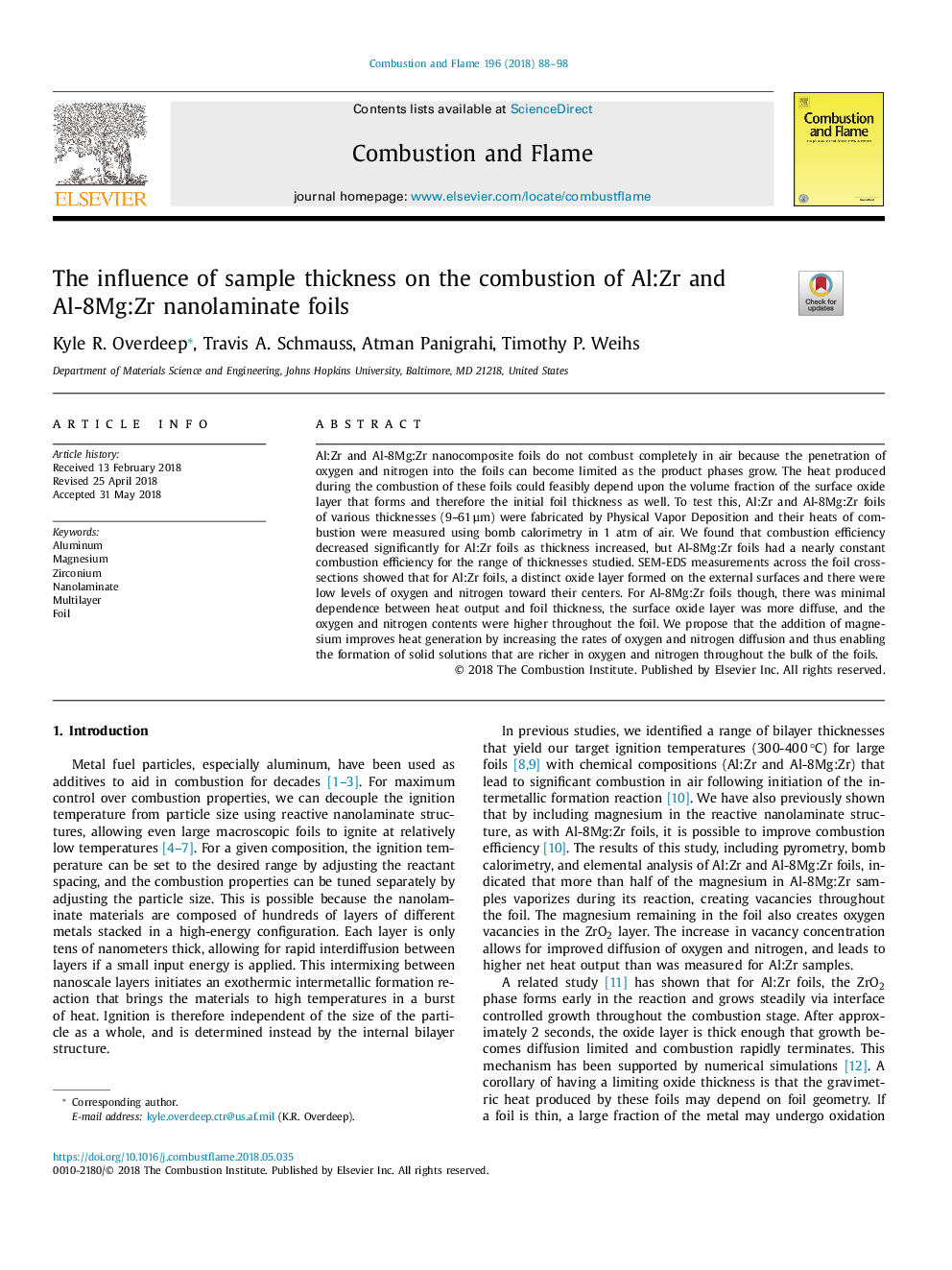| Article ID | Journal | Published Year | Pages | File Type |
|---|---|---|---|---|
| 6593360 | Combustion and Flame | 2018 | 11 Pages |
Abstract
Al:Zr and Al-8Mg:Zr nanocomposite foils do not combust completely in air because the penetration of oxygen and nitrogen into the foils can become limited as the product phases grow. The heat produced during the combustion of these foils could feasibly depend upon the volume fraction of the surface oxide layer that forms and therefore the initial foil thickness as well. To test this, Al:Zr and Al-8Mg:Zr foils of various thicknesses (9-61â¯Âµm) were fabricated by Physical Vapor Deposition and their heats of combustion were measured using bomb calorimetry in 1 atm of air. We found that combustion efficiency decreased significantly for Al:Zr foils as thickness increased, but Al-8Mg:Zr foils had a nearly constant combustion efficiency for the range of thicknesses studied. SEM-EDS measurements across the foil cross-sections showed that for Al:Zr foils, a distinct oxide layer formed on the external surfaces and there were low levels of oxygen and nitrogen toward their centers. For Al-8Mg:Zr foils though, there was minimal dependence between heat output and foil thickness, the surface oxide layer was more diffuse, and the oxygen and nitrogen contents were higher throughout the foil. We propose that the addition of magnesium improves heat generation by increasing the rates of oxygen and nitrogen diffusion and thus enabling the formation of solid solutions that are richer in oxygen and nitrogen throughout the bulk of the foils.
Related Topics
Physical Sciences and Engineering
Chemical Engineering
Chemical Engineering (General)
Authors
Kyle R. Overdeep, Travis A. Schmauss, Atman Panigrahi, Timothy P. Weihs,
